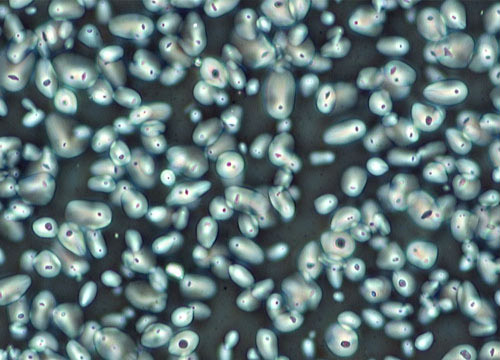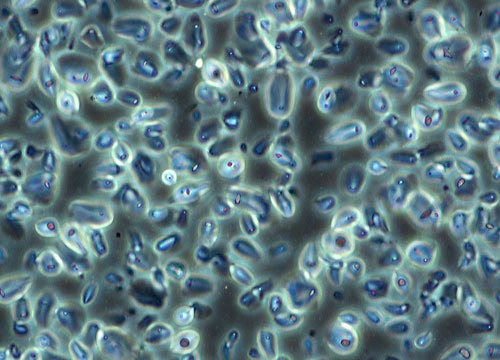Arrowroot (Maranta arundinacea) Starch Granules
Use of arrowroot plant starch is a long-standing English tradition. Spice purveyors as far back as the 1700s understood the benefits of arrowroot starch and fought over rights to the crops. Since true arrowroot, known formally as Maranta arundinacea, is cultivated only in St. Vincent, there often was not enough product to meet demand. Even today, attaining true arrowroot starch is somewhat difficult. Products often labeled arrowroot are usually a less expensive version of a similar root, which originates in Brazil or China.
 Negative
Negative
 Positive
Positive
Positive
Use of arrowroot plant starch is a long-standing English tradition. Spice purveyors as far back as the 1700s understood the benefits of arrowroot starch and fought over rights to the crops. Since true arrowroot, known formally as Maranta arundinacea, is cultivated only in St. Vincent, there often was not enough product to meet demand. Even today, attaining true arrowroot starch is somewhat difficult. Products often labeled arrowroot are usually a less expensive version of a similar root, which originates in Brazil or China.
Negative
The reasons arrowroot starch is so highly sought after are numerous. Arrowroot stems contain complex carbohydrates with a molecular structure that enables thickening to occur at a lower cooking temperature than most starches. This means the starch is less likely to burn, a bonus for beginning cooks and experienced chefs alike. Also, because arrowroot contains high levels of amylopectin, the starch creates wonderful, clear glazes, gravies and sauces. As an added benefit, arrowroot starch is the easiest starch for humans to digest, and can be used to enhance digestion and aid in hangover recovery.













